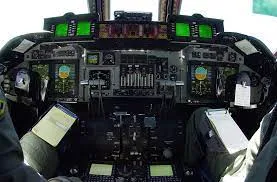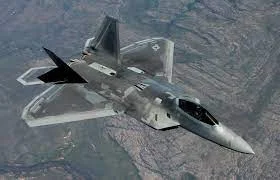Definition: An aircraft air data system (ADS) is a critical component that measures various atmospheric properties surrounding the aircraft and converts them into essential flight parameters. It primarily uses pressure and temperature data as inputs to calculate airspeed and altitude, vital for safe and efficient flight operations.
Click the Translate button(see right) on this post to set your Own Language to understand more perfectly!!
Aircraft Air Data System Calculator
Airspeed: knots
Altitude: feet
Knots to meter/sec: One knot is equivalent to 0.514 meters per second. Here's the conversion factor: 1 knot = 0.514 m/s You can use this factor to convert between knots and meters per second: To convert knots to meters per second, multiply the knots value by 0.514. To convert meters per second to knots, divide the meters per second value by 0.514.Continue Definition:Aircraft Air Data SystemAn aircraft air data system (ADS) is a critical component that measures various atmospheric properties surrounding the aircraft and converts them into essential flight parameters. It primarily uses pressure and temperature data as inputs to calculate airspeed and altitude, vital for safe and efficient flight operations.
Components of an Air Data SystemAn ADS typically consists of three main parts:Probes: These are external sensors mounted on the aircraft that directly interact with the airflow. Common probes include:Pitot probe: Measures ram air pressure (pressure due to air movement)Static port: Measures static air pressure (ambient pressure)Combined pitot-static probe: Measures both ram and static pressure in a single unitAngle of attack (AOA) vane: Measures the angle between the oncoming airflow and the aircraft's longitudinal axisPneumatic lines: These are tubes that transmit the pressure data from the probes to the Air Data Computer (ADC).Air Data Computer (ADC): This is the brain of the ADS. It receives pressure and temperature inputs, performs calculations, and outputs critical flight parameters like:Airspeed: The speed of the aircraft relative to the surrounding air, calculated using Bernoulli's principle relating pressure and velocity.Altitude: The aircraft's height above a reference level, determined using static pressure and applying atmospheric models.Mach number: The ratio of the aircraft's speed to the speed of sound, often used for high-speed flight.
Vertical speed (Rate of Climb/Descent): The rate at which the aircraft is ascending or descending.Equation for Airspeed Calculation
One of the key functionalities of an ADS is calculating airspeed. Here's a simplified version of the equation based on Bernoulli's principle:Airspeed = sqrt(2 * (Ps - Po) / ρ)Where:Airspeed = The speed of the aircraft relative to the surrounding air (m/s)Ps = Ram air pressure (Pa) measured by the pitot probePo = Static air pressure (Pa) measured by the static portρ = Air density (kg/m³) (obtained from temperature measurements or lookup tables based on altitude)Note: This is a simplified equation and actual calculations in the ADC might involve more complex corrections for non-ideal probe locations and compressibility effects at high speeds.Recommendations for Air Data SystemsHere are some key properties to consider for an air data system:Accuracy: Precise measurements are crucial for safe flight control and navigation.Reliability: The system should function consistently and avoid failures that could impact flight safety.Durability: ADS components need to withstand harsh environmental conditions like extreme temperatures, vibrations, and icing.Fast Response Time: The system should provide real-time data for immediate pilot actions and autopilot operation.Easy Maintenance: Regular calibrations and potential repairs should be straightforward.Modern air data systems often integrate additional sensors like Angle of Attack (AOA) vanes for more comprehensive flight parameter calculations.How it is possible to Earn Money using the knowledge of Aircraft Air Data Management System Calculation????While directly using aircraft air data system calculations for commercial applications might be limited, your knowledge in this area can be valuable in various ways:1. Consulting and Development for Unmanned Aerial Vehicles (UAVs):The core principles of air data systems (pressure & temperature for airspeed & altitude) apply to UAVs (drones) as well.Your expertise can be valuable in:Designing and optimizing flight control systems for UAVs that rely on accurate air data calculations.Consulting on sensor selection and data analysis for UAV applications like aerial mapping, delivery services, or inspections.Developing software for processing and interpreting air data from UAVs for specific purposes.2.Weather Data Analysis and Forecasting:Understanding air pressure and temperature variations is crucial in meteorology.You can leverage your knowledge in:Developing algorithms for analyzing air data from weather stations or aircraft to improve weather forecasting models.Consulting on the interpretation of air data for aviation weather services.Contributing to research on atmospheric phenomena using air data analysis techniques..3. Educational Content Creation and Training:Share your knowledge of air data systems and their calculations through online courses, tutorials, or workshops.This can cater to:Aspiring pilots or drone operators who need to understand the fundamentals of air data for safe flight operations.Aviation enthusiasts interested in the technical aspects of aircraft instrumentation.Students pursuing careers in aerospace engineering or related fields.4. Simulator Development and Flight Training:Flight simulators rely on accurate air data simulations to provide a realistic training experience for pilots.Your expertise can be beneficial in:Developing algorithms for simulating air data behavior based on real-world data and flight models.Consulting on the integration of air data systems into flight simulators for improved training effectiveness.Designing training scenarios that involve air data interpretation and troubleshooting for pilots.5. Research and Development in Aerodynamics:Air data plays a vital role in aerodynamic research aimed at improving aircraft performance and efficiency.You can contribute by:Assisting with data analysis from wind tunnel tests or flight experiments that involve air data measurements.Developing software tools for processing and visualizing air data for aerodynamic studies.Contributing to research on novel air data sensing technologies or data analysis techniques.Remember, your knowledge of air data system calculations provides a strong foundation for understanding various aspects of flight and atmospheric science. By exploring these specialized areas, you can leverage your skills for various career paths and contribute to advancements in these fields.Do YOU Want To Earn Money In Various Ways, Click The Link & Explore Your Field of Interest!!!










